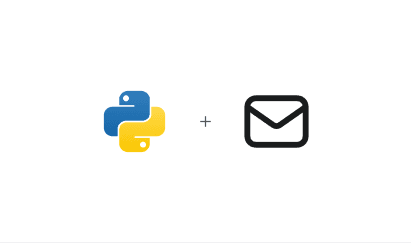Email Regex Python Validator
Python

Show Your Support with a Star ⭐
It takes just a second, but it means the world to us.
Introduction to Email Regex Python
Email validation is a common requirement in various Python applications, from web development to data processing. Python provides powerful tools and libraries to validate email addresses using regular expressions (regex). A typical regex pattern for email validation might look like ^[a-zA-Z0-9._%+-]+@[a-zA-Z0-9.-]+\\.[a-zA-Z]{2,}$, which checks for a general structure: local-part@domain.
What is Email Regex?
An email address typically consists of a local part, a domain, and a top-level domain (TLD).
1. The Local Part
The local part of the email address appears before the '@' symbol and can include:
Alphanumeric characters (
a-z,A-Z,0-9).Special characters like periods (
.), underscores (_), percent signs (%), plus signs (+), and hyphens (``).
The regex pattern for the local part is: [a-zA-Z0-9._%+-]+
2. The Domain
The domain follows the '@' symbol and typically contains alphanumeric characters and hyphens.
The regex pattern for the domain is: [a-zA-Z0-9.-]+
3. The Top-Level Domain (TLD)
The TLD is the segment after the last period, specifying the email's domain category.
It consists of at least two alphabetic characters (
a-z,A-Z).
The regex pattern for the TLD is: [a-zA-Z]{2,}
The Complete Email Regex Pattern
Combining these parts, the complete regex pattern for an email address is:
^[a-zA-Z0-9._%+-]+@[a-zA-Z0-9.-]+\\.[a-zA-Z]{2,}$
How to Validate Email Regex in Python?
To validate an email address using regex in Python:
Define the regex pattern for a valid email.
Use the
remodule to compile the regex pattern.Validate email strings using the compiled regex.
Uses of Email Regex Validation
Email regex validation in Python is used in:
User Input Validation: Ensuring that user-provided email addresses in web forms and applications are correctly formatted.
Data Cleaning: Validating and standardizing email addresses in datasets, especially in data analysis and machine learning projects.
Communication and Notification Systems: Verifying email addresses before sending out communications or notifications.
What next?
Python's regex capabilities provide a robust solution for validating email addresses in various applications. For enhanced validation, use tools like Akto Python validator to check the validity of email addresses against established standards.
Check our other language Email Regex validators - Email Java Script Regex, Email Golang Regex, Email Java Regex

